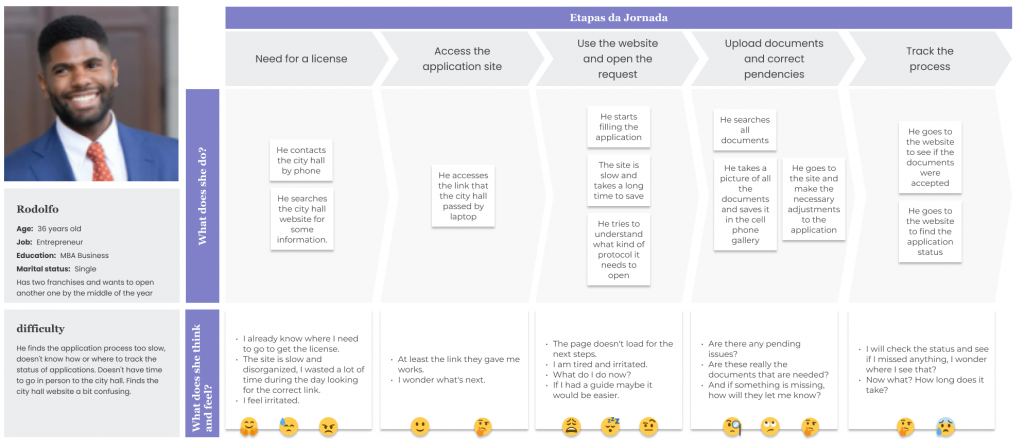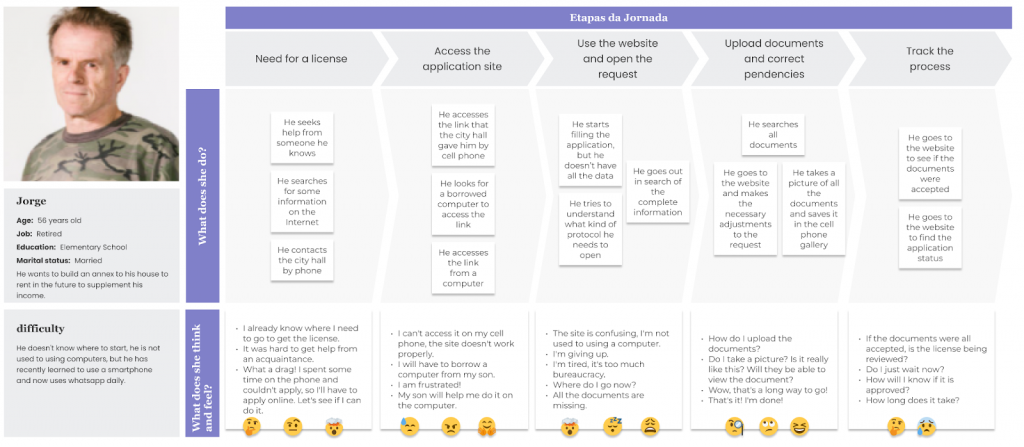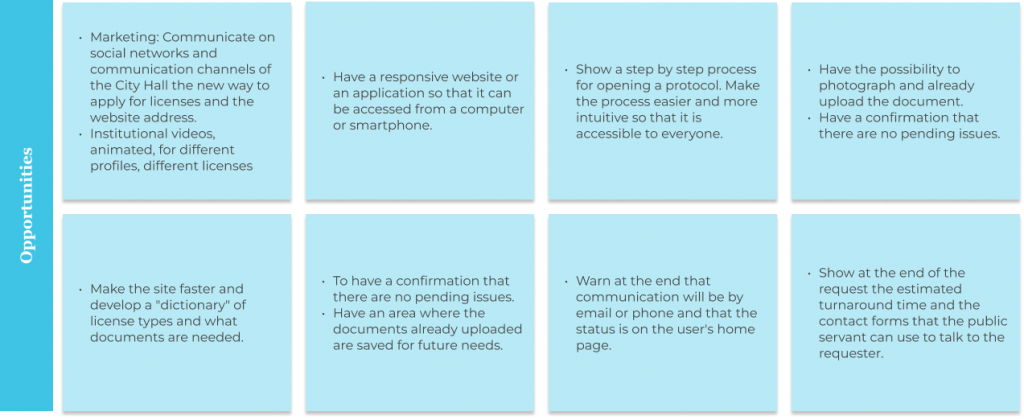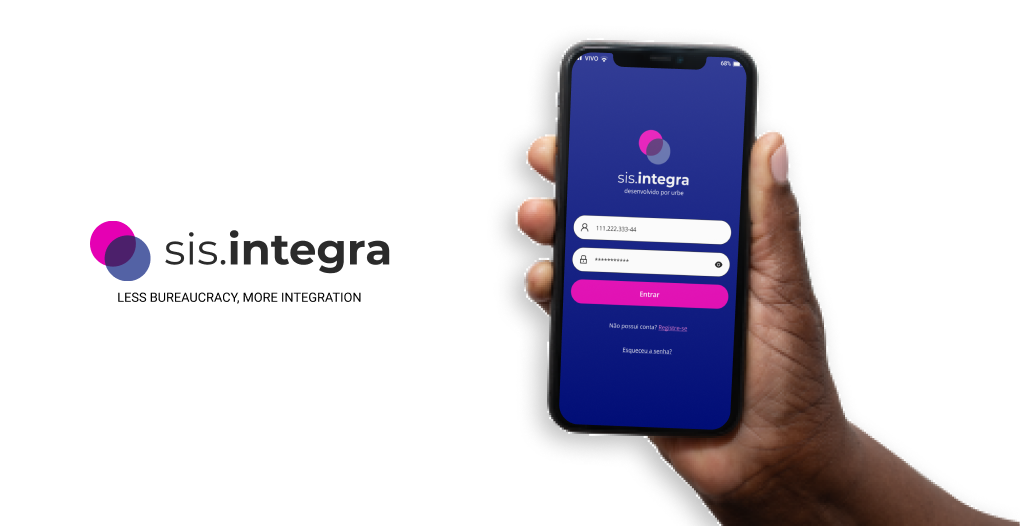Role: Project Lead, Product Designer, UX Writing, UX/UI
We can observe that the suspension of services provided by public agencies during the pandemic period negatively impacted citizens’ daily lives, generating waiting queues and a backlog of processes. In this context, sis.integra emerges as a solution to streamline the work of public servers and facilitate the response time for citizens.
The main objective of sis.integra is to speed up citizen service by integrating processes and systems, reducing response times, and improving the efficiency of services provided by public agencies.
How
To serve the external audience, we started the process of creating personas. During the elaboration of the CSD matrix, we noticed the need to divide the audience into two distinct groups: entrepreneurs/micro-businesses and individuals.


After discussing the characteristics of these two groups, we gathered insights to improve the user experience. These insights were recorded in a document to guide the next stages of the project. The goal was to identify opportunities to improve the user experience and offer solutions that meet their specific needs.

Requirements analysis
In a new meeting with the requirements analysis team, we started the process of detailing the system focused on the citizen.
During the mapping of processes and business rules, we identified five new modules that emerged to meet the needs of the system’s central user. Some parts of these modules were similar, which allowed the use of existing solutions to improve the efficiency of the process. The five new modules identified were:
- User Registration
- Process Opening
- Help Center
- Scheduling
- Accessibility
Each of these modules was detailed to ensure that it met the user’s specific needs and offered a high-quality experience.

Design System
The use of atomic design technique was a great choice for the development of the system. This approach allowed the creation of a consistent, modular, and easily maintained user interface, as well as allowing the reuse of components in other system modules.
Atomic design ensures a cohesive and consistent user experience throughout the system. Additionally, this approach also facilitated system maintenance, as each element can be easily modified without affecting other components. The use of a Design System, such as this one based on atomic design, is essential for the development of efficient and scalable systems.
UX Writing
I collaborated with the marketing team and the Product Owner of this project to carefully define the words and phrases used in the application interface. The goal was to ensure that the writing was clear, objective, and user-oriented so that they could easily understand the system’s features and use it without difficulty.
To do this, we established a language and tone of voice that reflected the identity and values of the city hall and used microcopy to guide the user at each stage of the process. We also created a consistent and easy-to-understand terminology for the different elements of the system.
We documented the entire application communication process with the user and, with that, moved on to the next stage of this project.

Prototyping
During the prototyping stage, I developed a high-fidelity prototype with interactions and integrated the texts created during the UX Writing process. I conducted usability tests with users to evaluate the effectiveness of the writing and proposed interaction, and discussed with the client the need to implement new security rules for access.
After another round of testing and adjustments, I finalized the documentation and started the hand-off process.

Hand-off
As part of the project development process, I handed off to the responsible developer, dividing user cases into sprints and monitoring progress weekly.
It is important to note that the company’s strategy is to deliver the complete system first to public servers, making all the handover and training before releasing application access to citizens. Therefore, even after the hand-off, the project is still under development and will go through more stages until its completion.
Results
Although the app has not yet been made available in the store, we expect to achieve great results with the implementation of this project. Just as we did with sis.integra for public servants, we aim to reduce bureaucracy for citizens, shorten deadlines, increase transparency, and facilitate communication between citizens and public servers. We are looking forward to seeing the positive impact that this solution will bring to society.
